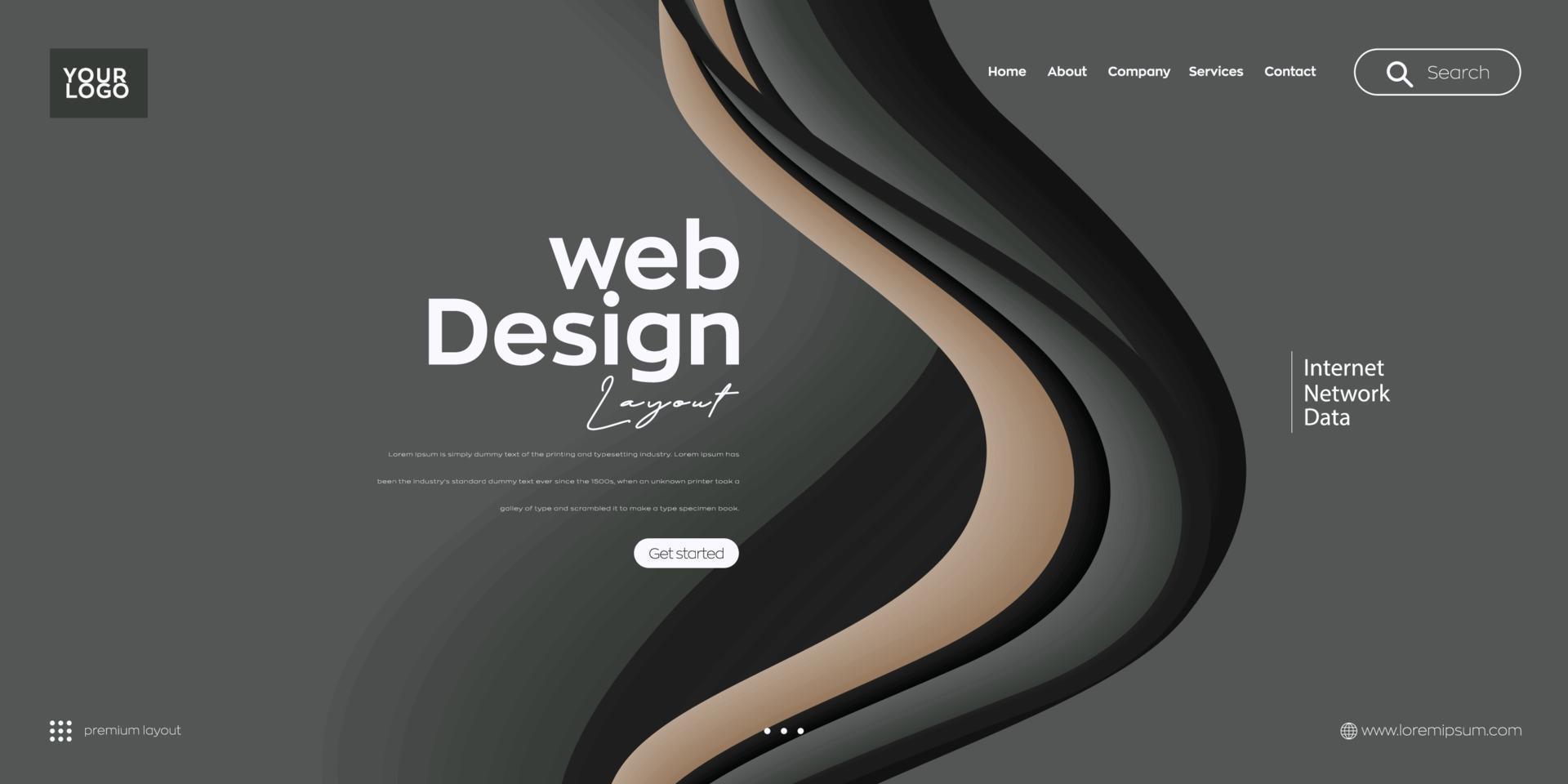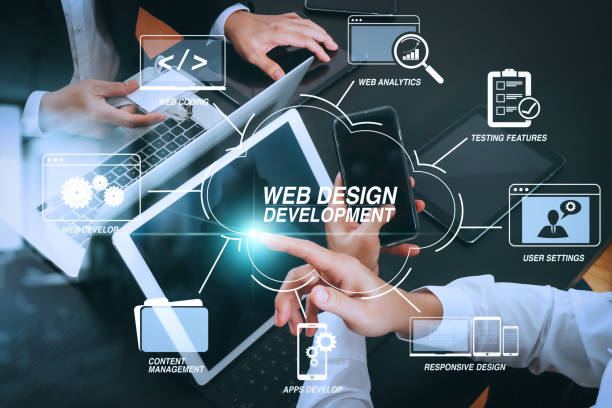The Very Best Sorts Of Website Design to Enhance User Experience and Engagement
In the ever-evolving landscape of digital interaction, the efficiency of Web style substantially affects customer experience and involvement. Various design strategies, such as minimal, responsive, and interactive layouts, each offer special benefits that can cater to varied individual demands.
Minimal Website Design
As digital landscapes end up being significantly chaotic, minimalist Web style has actually emerged as a powerful technique to enhancing individual experience. This design ideology prioritizes simplicity, concentrating on necessary elements while eliminating unneeded interruptions. By utilizing ample white space, simple navigation, and a limited shade scheme, minimalist design cultivates clarity and guides individual focus to essential material.
The core concept of minimalist website design is to create a seamless communication for users. By minimizing cognitive load, customers can promptly understand information without feeling overwhelmed. This direct technique not just enhances functionality but additionally encourages engagement, as visitors are much more likely to check out a website that is simple and aesthetically attractive to navigate.
Additionally, minimalist style usually stresses typography and images, making use of these components tactically to communicate messages efficiently. This emphasis on vital components can enhance brand identification and produce an unforgettable customer experience. Essentially, minimalist Web design is not simply a fad; it is a thoughtful method that acknowledges the relevance of user-centered design. By removing nonessential aspects, developers can develop a more interesting, reliable, and enjoyable Web experience for all customers.
Responsive Website Design
In today's diverse digital atmosphere, responsive Web layout has become necessary for developing a smooth user experience throughout a multitude of tools. As users accessibility internet sites on mobile phones, tablet computers, desktops, and laptop computers, the capability of an internet site to adapt its layout and web content to different display dimensions and resolutions is crucial.
Receptive Web style employs flexible grids, pictures, and CSS media questions to make sure that Web content is provided optimally, despite the gadget made use of. This technique not just enhances the aesthetic allure of a site yet also significantly enhances use. Users are more probable to involve with a website that supplies a regular experience, as it eliminates the stress of needing to zoom in or scroll excessively.
Moreover, internet search engine, consisting of Google, prioritize mobile-friendly websites in search rankings. By embracing responsive layout, organizations can improve their exposure and reach a broader audience. This method also streamlines internet site maintenance, as a solitary version of the site can deal with all devices, lowering the requirement for numerous variations. In recap, receptive Web design is an essential practice that enhances customer experience, engagement, and overall fulfillment.
Interactive Web Style
Responsive Web layout prepares for enhancing user experience, but interactive website design takes this a step better by involving customers in a much more vibrant means - Aligned Position Web Design. By integrating elements such as animations, clickable models, and real-time feedback, interactive website design captivates individuals, attracting them into a richer surfing experience
This approach not just promotes interaction but also encourages individuals to discover content proactively instead of passively eating it. Techniques such as gamification, where individuals gain incentives for completing tasks, can considerably enhance the time invested in a site and enhance overall complete satisfaction. Interactive features can simplify intricate details, making it more digestible and delightful.

Incorporating interactive design aspects can also bring about higher conversion prices, as users are more probable to involve with a site that proactively entails them. Aligned Position Web Design. Inevitably, interactive Web style transforms user experiences into remarkable journeys, guaranteeing that visitors return time and once again
Apartment Layout
Defined by its minimalistic method, flat design emphasizes simplicity and functionality, removing unnecessary components and concentrating on necessary functions. This style approach focuses on use, making certain that customers can navigate user interfaces easily and performance. By using a tidy visual, level design eliminates the mess commonly discovered in extra ornate styles, consequently improving user concentrate on material and performance.
The trademark of level design exists in its use strong colors, straightforward typography, and geometric shapes. These components add to a visually attractive interface that is both approachable and modern. In addition, level design cultivates a sense of clarity, permitting individuals to recognize essential actions and information without diversion.
Furthermore, level layout is particularly effective in responsive website design, as its simplicity equates well across numerous tools and display dimensions. The lack of detailed textures and gradients lessens packing times, which is essential for maintaining individual engagement. As electronic landscapes remain to develop, flat style remains a pertinent choice for developing easy to use internet sites that improve total experience. By concentrating on vital features, level layout not only satisfies user requirements but likewise motivates seamless communication, making it a vital part of effective Web style techniques.
Flexible Web Layout
Flexible website design customizes the customer experience by producing several dealt with designs tailored to different display dimensions and tools. Unlike receptive layout, which fluidly readjusts a solitary design, flexible layout uses unique formats for specific breakpoints, guaranteeing optimal presentation on various platforms. This technique permits designers to concentrate on the distinct characteristics of each tool, improving use by delivering specifically what users need based on their context.
One of the main advantages of adaptive Web design is its capability to enhance lots times and efficiency. By offering customized web content and photos that fit the user's gadget, sites can decrease information use and boost loading speeds. This is specifically helpful for link users with slower connections or minimal data plans.

Furthermore, flexible style facilitates a more consistent and controlled branding experience. Since designers develop several designs, they can guarantee that the aesthetic components line up with the brand's identification across different this page systems - Aligned Position Web Design. This causes a natural user experience, boosting involvement and promoting customer retention
Verdict
In verdict, the assimilation of minimal, receptive, and interactive Web style principles substantially improves user experience and interaction. Minimal layout promotes clearness and emphasis, while responsive style makes sure flexibility throughout numerous devices, advertising access. Interactive layout captivates customers via dynamic elements, encouraging exploration and personalization. Jointly, these layout approaches add to the production of straightforward environments that not just boost complete satisfaction but also drive higher conversion prices, emphasizing their critical significance in contemporary Web style approaches.
Minimalist style promotes clarity and emphasis, while responsive layout guarantees versatility throughout numerous gadgets, promoting availability. Jointly, these style comes close to contribute to the development of straightforward environments that not only improve fulfillment yet likewise drive greater have a peek here conversion rates, underscoring their important value in modern Web style strategies.